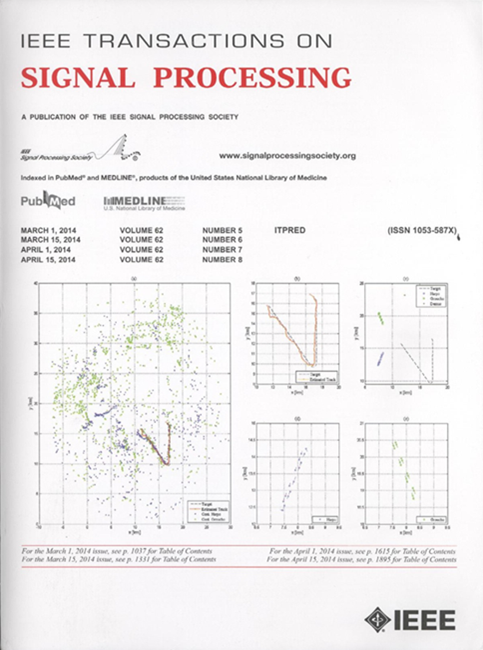A Distributed Multi-Objective Detection Method for Multi-Sensor Systems With Unknown Local SNR
IF 4.6
2区 工程技术
Q1 ENGINEERING, ELECTRICAL & ELECTRONIC
引用次数: 0
Abstract
Distributed detection, which fuses the preprocessed observations of the same area from local sensors, can generally improve target detection performance. For scenarios in practical applications where sensors cannot obtain the target signal-to-noise ratio (SNR) parameters in advance, non-coherent integration is mostly used for distributed detection. However, this detector is equivalent to the optimal detector only under the condition that the target SNRs of all the sensors are exactly the same. This condition is quite stringent for the observation of non-cooperative targets. This paper first compares the performance of traditional optimal detectors, the non-coherent integration (NCI) detector, and the single-sensor detector from a unified perspective based on the concept of Pareto optimality. Then, from the perspective of multi-objective optimization, the fusion rule and corresponding parameter learning method are designed. Theoretical analysis shows that the proposed non-identical SNR detection fusion rule possesses weak Pareto optimality. Simulation experiments demonstrate that the proposed method effectively achieves a trade-off between the optimal detection performance across sensors with multiple SNRs. Compared to the optimal detector in the presence of mismatch between the assumed and actual SNR of the target, the proposed method can achieve a significant improvement in detection performance. Additionally, the proposed method outperforms the NCI detector in scenarios where the SNR distributions of target observations across different sensors exhibit greater diversity.求助全文
约1分钟内获得全文
求助全文
来源期刊

IEEE Transactions on Signal Processing
工程技术-工程:电子与电气
CiteScore
11.20
自引率
9.30%
发文量
310
审稿时长
3.0 months
期刊介绍:
The IEEE Transactions on Signal Processing covers novel theory, algorithms, performance analyses and applications of techniques for the processing, understanding, learning, retrieval, mining, and extraction of information from signals. The term “signal” includes, among others, audio, video, speech, image, communication, geophysical, sonar, radar, medical and musical signals. Examples of topics of interest include, but are not limited to, information processing and the theory and application of filtering, coding, transmitting, estimating, detecting, analyzing, recognizing, synthesizing, recording, and reproducing signals.
 求助内容:
求助内容: 应助结果提醒方式:
应助结果提醒方式:


